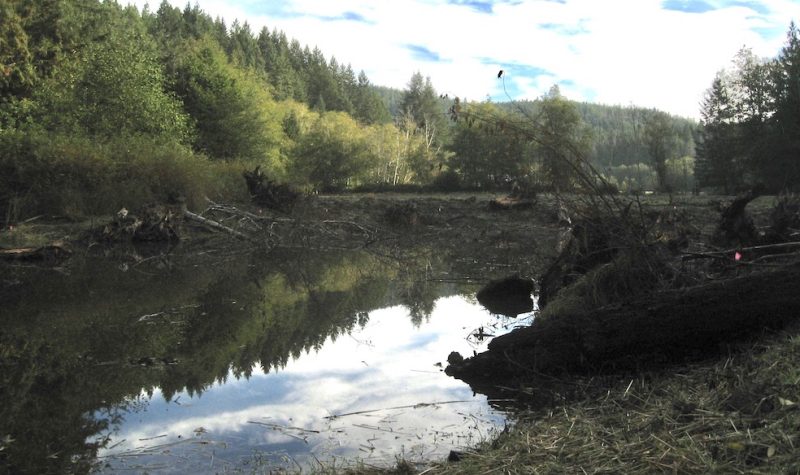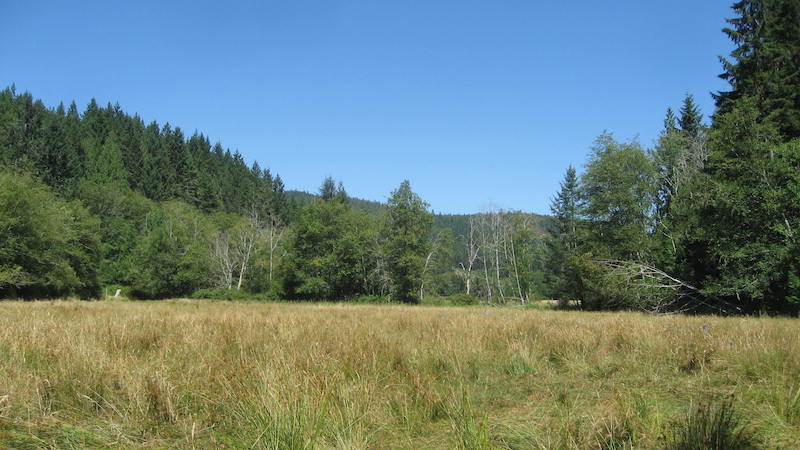As the Dillon Creek wetlands project enters a new phase, Linnaea Farm’s executive director Tamara McPhail describes what this project means to her.
“I got to see the farm through a wetland restoration guru’s eyes and that was really eye opening for me,” she said.
The logical place to start was Cortes Island’s oldest farm (preempted in 1887).
In the spring of 2018, wetland restoration specialist Tom Biebighauser took McPhail and Adam Schick, resident stewards of Linnaea Farm, on a walk through the future restoration site.
Biebighauser led them to where the land clearing stopped during the 1970s and the erosion started. He described what the wetland probably looked like prior to being transformed into an agricultural field. Dillon creek was actually a ditch created to drain the land.
“I started to hear running water as erosion,” said McPhail.
This project is being undertaken as a partnership project between Friends of Cortes Island Society (FOCI) and the Linnaea Farm Society (LFS).
McPhail spoke about the conversations that she had with Shick, and Linnaea Farm VP Kirsten Vidulich, had about this project. She describes the process of deep learning as they began to think of the farm in relationship of the larger ecosystem.
She said the people who created what is now known as Linnaea Farm were carrying out the best agricultural practises known at that time.
“We don’t know when we do some things, how the land will respond,” admitted McPhail.
So, decades later, they are restoring the wetlands that will mitigate the flow of nutrients and sediments into the lakes.
Similar steps must be taken with other gardens, livestock, and ditches around the shores of lakes, but it has begun at Linnaea Farm.
There have been many work days since the Dillon Creek wetlands restoration project began.
A transformation took place last month, when the pasture was torn apart to prepare the way for a wetland.
CKTZ news interviewed Tamara McPhail shortly after that.
Now the fall rain season has begun: water has filled the hollows that were intended for ponds. The soil is moist and tomorrow, Sept. 28, volunteers will be planting 320 native plants in the new wetlands.
Anyone interested in participating is asked to come between 10 a.m. and 2 p.m. and bring a shovel and/or wheelbarrow if you have one.




